Workplace Safety and Efficiency with Drum Handling Equipment
Author: MHA Products Date Posted:11 December 2014
A full fifty-five gallon drum can weigh up to around two thousand pounds. Moving this heavy object can be very dangerous. Some people utilises forklift as the safest way to move these heavy drums. Yet, if this is not handled properly, it can possibly knock them over. Leaving someone hurt or if not, contents will spill out from the drums. There are also other ways that people try to move these drums. Some do it by rolling them on the bottom rim of the drum, while others lay it down and roll it across the floor. This is also done to mix the contents of the drum. At times, a makeshift ramp is utilised to easily move the drums. But this is a bit dangerous since ramp could easily break. It is suggested to make sure that ramps are strong and durable enough to withstand the weight of the drums.
Why Drum Moving is Hazardous?
Moving drums is very hazardous to the movers. They are far too heavy for the average person to move safely. Drums that are made of plastic are slippery. This makes getting a good grip on them very difficult. Most drums are stored in places that are tight to get into. Sometimes the floors where they are stored could be uneven, slippery or even cluttered which makes it hazardous to move. Some people think that moving a partially full drum would be easier. The truth is that the contents could shift, which makes it hard to control. One mistake and the drum could open. Then these dangerous chemicals could scatter everywhere and cause contamination.
Training & Orientation
Companies dealing with drum handling business must need to advise their employees. There must be safety procedures to prevent hazardous circumstances that come with handling these drums. All drums come with MSDS or Material Safety Data Sheet stick on its body. The diamond sticker shows the level of danger it can cause the handler. The blue space indicates its health risk to the handler. The red stands for the flammability of the content. Yellow indicates the reactivity of the substance. The white space suggests the appropriate clothing to be worn while handling the material. Apart from the right clothing, other protective gears should be worn. These would include:
- Safety goggles
- Gloves
- Steel toed boots
Companies should ensure proper lighting in their facilities. There must also be adequate space to move and store the drums. To avoid injuries, companies must have ergonomic equipment in place. This will help in handling the drums safely and effectively. If a certain company uses a forklift attachment, it must comply with the OHSA requirements. Training the employees is also the best way that companies can avoid accidents and injuries in the workplace. Training and orientation on all drum handling equipment is very important and shouldn’t be disregarded.
Drum Moving Safety
All heavy drums must be moved with the proper drum-handling equipment. This equipment includes:
- Forklift attachment
- Drum truck
- Below hook drum lifter
- Other drum-handling devices
The average fifty-five gallon drum weighs about four to eight hundred pounds and the contents can shift at any time. Using drum-handling equipment will minimise the possibility of injury while moving it. Before handling a drum, employees should check the content of the drum. They need to refer to the MSDS label to know the kind of substance inside the drum. Handlers must also wear appropriate protective clothing and gears while handling the equipment.
Environmental factors must also be considered. These are:
- Lighting
- Space
- Floor imperfections
Having a perfect working environment eliminates the possibility of a spill or contamination. Checking the lids and bungs of the drums is also very important. Replace immediately if there are missing.
Training is another key to keeping all employees safe while handling the drums. Drum handlers must be flexible in handling different types of drums. Whether it’s made of fibre, plastic or steel, the handler must be adaptable of handling all types. Drums that are half way full may not be so heavy, but they still require proper handling equipment. A sudden shift of the content can cause injury or damage to the handler.
A drum palletiser or below hook drum lifter is one of the handling equipment to safely move drums. It can be easily attached to a crane or hoist. If the drums have to be moved to a rack, then a drum racker should be used. Employees should never move a drum with bare forks on the forklift. A drum racker should also be used if the drums are stored on their sides. If a drum handler needs to dump the drum, a mobile drum handler must be utilised. A hook drum carrier or a forklift drum carrier is also applicable for this task. These types of equipment ensure that the drums are properly secured when dumping them.
Moving an empty drum can be just as dangerous as moving a full one. When moving an empty drum, support the drum with your thighs. Make sure it is facing the right direction that you want it to flow. Then roll it on the lower rim while rotating the top rim with your hands. Lift empty drums by squatting and then slowly straightening your legs. Don’t bend your back or you will be injured. The safest way to move empty drums is with a drum truck.
Wearing gloves is a must when moving an empty drum. Never roll a drum out of a truck or around blind corners. Be sure to have a guard who looks around them for you. Pay close attention to the edges of the drums and check for loose lock rings and bungs. Be cleared of any obstacles or small pieces that can catch on your gloves or clothes. These can distract you or cause you to lose your balance. Mixing the content of a drum should never be done by rolling it on the floor. If the contents need gentle mixing, it should be done with a drum roller. Otherwise, a drum tumbler is used if it requires a more vigorous mixing.
Drum Handling Equipment

1. Drum Mixers
There are three popular drum rollers that are used for mixing drum contents. They are the hydra-lift, the stationary and the portable drum rollers. The hydra-lift drum roller is powered by a hydraulic system. It lifts the drum upright and then it is rolled over the wheels. The stationary drum roller works by placing the drum on the wheels. Then it is rolled to mix the contents. A portable drum roller can be moved around more easily using the same kind of wheels that a stationary model utilises.
A drum tumbler lets the user mix the contents of a drum. To load a drum tumbler, the drum is hoisted by a crane or forklift into the machine. There are two types that are commonly and widely used. The manual tilt-to-load drum tumbler and the tilt-to-load drum tumbler with automated controls. The manual tilt-to-load drum tumbler needs to be lifted into the machine with drum handling equipment. Once in place, the drum tumbler vigorously shakes the drum corner over corner. The tilt-to-load drum tumbler with automated controls does the same to the drum. But, it automatically lifts the drum up and is used with a protective cage.
2. Forklift Drum Handlers
The best multipurpose forklift attachment for drum handling is the lift and pour drum handler. Some have battery powered tilt and weight limits requirement. There are also forklift attachments that can transport a drum in upright position. They work with drum rackers that lift and tilt the drums as well as fork hooks that are attached to a drum lifter.
3. Below-Hook Handlers
Below-hook handlers are used by attaching them around the drums and then lifting them up with a hook on a crane or forklift. Most below-hook handlers come as lift and pour, which makes work easier. Others are stationary and don’t pour. These below-hook handlers are available in a wide array of options:
- Ones that are attached around the middle of the drum
- Ones that are attached on the top
- Ones that lift the drum up by its side
4. Drum Rackers
Drum rackers are used in lifting, moving and storing of drums. Depending on which drum racker to purchase, the company has to determine how high they have to store their drums.
5. Drum Trucks
Drum trucks are another type of handling equipment to safely and conveniently move drums. They have flat bottoms that can be used to slip under the drum. They also have steel bars wrapped around the bottom of the drum. There is another product similar to drum truck which is called a drum dolly. A drum dolly is a round looking scooter where drums can be placed for easy handling. To safely use this equipment, the drum needs to be lifted up. This way, the dolly can be put in place and then lowered onto the base. Most drum trucks or dollies come with an arm attachment that makes moving easier. For heavier drums, a drum cradle is used. Drum cradles are designed for bigger drums.
6. Drum Palletisers
Drum palletisers make moving and lifting drums off of pallets easier. The drum spotter works by lifting the drums to be moved. Using the handle, the controller can remove and place the drum on pallets. Drum palletisers are used to lift and sit drums on the corner of pallets. Some have jaws that grip the drum’s rim. Drum palletisers also come in lift and pour models.
Where to Buy Drum Handling Equipment

Searching for drum handling equipment could be daunting at times. But fret no more as MHA Products is here to save your day. MHA Products has been serving Australia for over twenty-five years. We are known to be the best place to buy storage and handling products.
At MHA Products, we pride ourselves in helping increase productivity and reduce the need to manually handle things in the workplace. We only offer the best and satisfaction-guaranteed products for our customers. MHA Products is a family owned business that cares and values its customers. We ship all of our products to every part of Australia. We also provide a money-back guarantee to customers for a total satisfaction-guaranteed experience.
Check out our website to find all sorts of drum handling equipment to suit your every need. We also offer:
- 20L drum pumps
- 210L drum funnels
- Rotary pumps
- Industrial drum taps and vents
- Drum sealing products
- Industrial drum tools
We also have a variety of drum handling equipment to make moving the drums easier. These are:
- 360 degree forklift handle wind drum rotator
- Deluxe drum cradle
- Drum and create dollies
- Drum lifting and tipping machines
- Drum palletiser stackers
- Drum sling lifter
- Electric drum lifter and rotators
- Forklift drum grab and rotator
- Everything else to safely move a drum
Drums are useful in storing hazardous chemicals and substances. However, they can be very heavy and dangerous to handle, requiring great caution. It’s not only the weight that is dangerous but also the content of the drums. Make sure all of the safety manuals are read and followed. Manuals are more detailed than the precautions written on the drum.
Reviewing all the details on the safety manuals before handling the drums is very essential. Training and orientation on how to use these various drum handling equipment is not enough. There might be something vital in the manual that could come in handy later. This could be troubleshooting or fixing of broken parts that might have been left out of the training. Having not enough knowledge on how to fix broken parts could lead to injuries.
Working in an industry that deals with drum handling equipment requires skills and expertise of employees. Therefore, companies must remind their workers to be alert at all times to ensure a safe working environment.



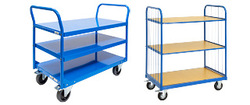

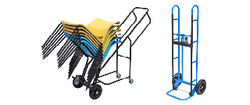


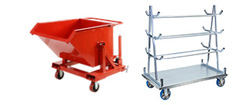
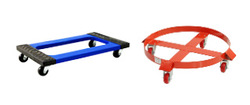
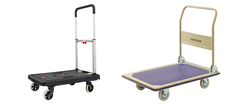
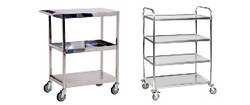

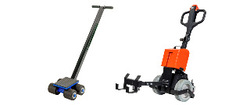
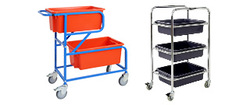
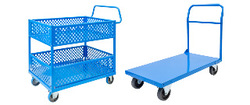
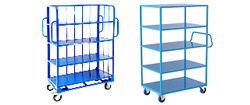
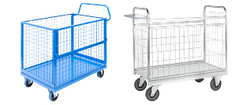
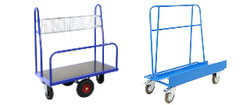
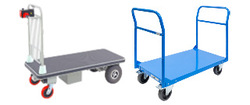
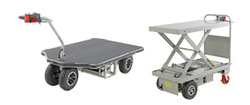
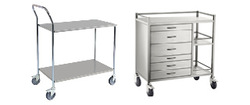
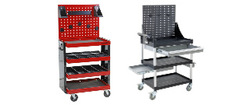
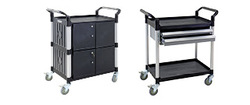
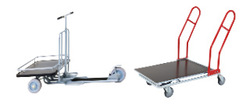
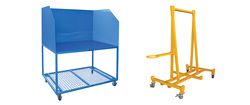



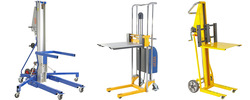



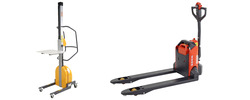
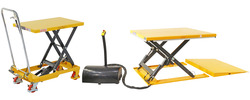
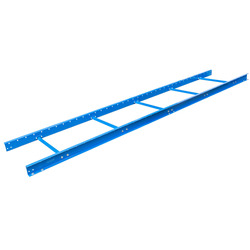
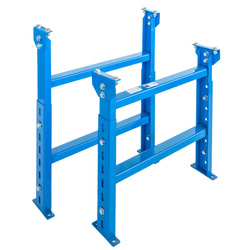

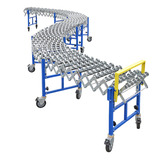



















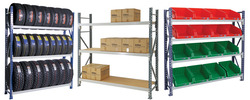
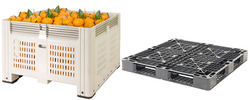
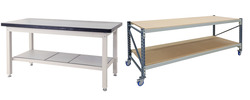
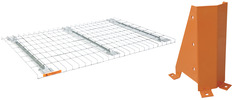
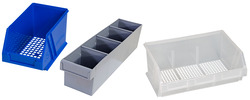

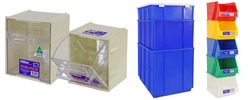

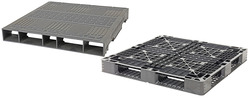
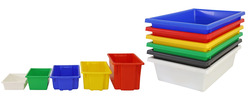
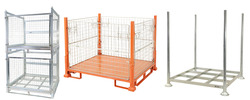

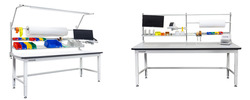

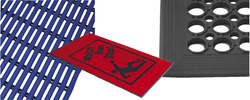
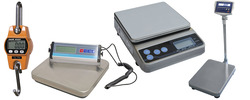



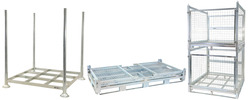
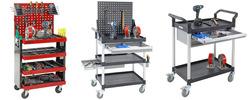
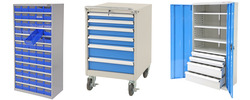

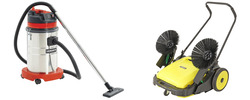





















































 Trolleys / Hand Trucks
Trolleys / Hand Trucks 2 Tier Trolleys
2 Tier Trolleys 3 Tier Trolleys
3 Tier Trolleys Aluminium Trolleys
Aluminium Trolleys Appliance & Hand Trucks
Appliance & Hand Trucks Cage Trolleys
Cage Trolleys Cleaning Carts & Trolleys
Cleaning Carts & Trolleys Construction Trolleys
Construction Trolleys Dollies
Dollies Foldable Trolleys
Foldable Trolleys Hospital Trolleys
Hospital Trolleys Laundry/Linen Trolleys
Laundry/Linen Trolleys Load Skates & Tow Tugs
Load Skates & Tow Tugs Mail / Office Trolleys
Mail / Office Trolleys Multi Purpose Trolleys
Multi Purpose Trolleys Multi-Tier Shelf Trolleys
Multi-Tier Shelf Trolleys Order Picking Trolleys
Order Picking Trolleys Panel Cart Trolleys
Panel Cart Trolleys Platform Trolleys
Platform Trolleys Powered Trolleys
Powered Trolleys Stainless Steel Trolleys
Stainless Steel Trolleys Tool Trolleys
Tool Trolleys Utility Carts
Utility Carts Warehouse Trolleys
Warehouse Trolleys Custom Trolleys
Custom Trolleys Lifting Equipment
Lifting Equipment Forklift Attachments
Forklift Attachments Jib Attachments
Jib Attachments Lifting Hoists & Pallet Hooks
Lifting Hoists & Pallet Hooks Manual Stackers & Lifters
Manual Stackers & Lifters Pallet Jacks
Pallet Jacks Pallet Lifters
Pallet Lifters Pallet Rotators & Dispenser
Pallet Rotators & Dispenser Powered Pallet Trucks & Electric Lifters
Powered Pallet Trucks & Electric Lifters Scissor Lift Trolleys and Tables
Scissor Lift Trolleys and Tables Conveyor Equipment
Conveyor Equipment Conveyor Frames
Conveyor Frames Conveyor Stands
Conveyor Stands Roller Conveyors
Roller Conveyors Skate Wheel Conveyors
Skate Wheel Conveyors Access Equipment
Access Equipment Container & Yard Ramps
Container & Yard Ramps Step Stools & Ladders
Step Stools & Ladders Work Platforms & Crane Cages
Work Platforms & Crane Cages Drum Handling
Drum Handling Drum Storage & Bunding
Drum Storage & Bunding Drum Trolleys & Lifters
Drum Trolleys & Lifters Forklift Drum Handling
Forklift Drum Handling Containment & Spillage
Containment & Spillage Aerosol Cans Storage Cages
Aerosol Cans Storage Cages Bunded Pallets & Storage
Bunded Pallets & Storage Corrosive Goods Storage Cabinets
Corrosive Goods Storage Cabinets Flammable Liquid Cabinets
Flammable Liquid Cabinets Forklift Gas Storage Cages
Forklift Gas Storage Cages Gas Cylinder Storage
Gas Cylinder Storage Site Storage
Site Storage Spill Kits
Spill Kits Stillage Cages
Stillage Cages Waste Handling
Waste Handling Bin Lifters & Tippers
Bin Lifters & Tippers Plastic Waste Bins and Carts
Plastic Waste Bins and Carts Steel Waste and Tipping Bins
Steel Waste and Tipping Bins Storage Equipment
Storage Equipment Heavy Duty Cabinets & Benches
Heavy Duty Cabinets & Benches Heavy Duty Shelving
Heavy Duty Shelving Mega Bins & Pallets
Mega Bins & Pallets Packing Benches
Packing Benches Pallet Racking Accessories
Pallet Racking Accessories Parts Trays & Stor-Pak Bins
Parts Trays & Stor-Pak Bins Pegboard & Louvre Panels
Pegboard & Louvre Panels Plastic Bins
Plastic Bins Plastic Handling Solutions Bins
Plastic Handling Solutions Bins Plastic Pallets
Plastic Pallets Stack & Nest Bins
Stack & Nest Bins Storage Cages
Storage Cages Workplace Equipment
Workplace Equipment Workbenches
Workbenches Modular Workbenches
Modular Workbenches Electric Height-Adjustable Workbenches
Electric Height-Adjustable Workbenches Floor Matting
Floor Matting Industrial Weighing Scales
Industrial Weighing Scales Pallet Wrapping & Packaging Machinery
Pallet Wrapping & Packaging Machinery Ramps
Ramps Stationery Cupboards
Stationery Cupboards Storage and Stillage Cages
Storage and Stillage Cages Tool Trolleys
Tool Trolleys Tooling Cabinets
Tooling Cabinets Wheelie Bins
Wheelie Bins Workshop Equipment
Workshop Equipment Safety Equipment
Safety Equipment Gloves and PPE
Gloves and PPE Pallet Rack Post Protectors
Pallet Rack Post Protectors Safety Barriers & Bollards
Safety Barriers & Bollards Safety Knives & Cutters
Safety Knives & Cutters Signs and Traffic Supplies
Signs and Traffic Supplies Tool & First Aid Boxes
Tool & First Aid Boxes Construction Equipment
Construction Equipment Concrete Equipment
Concrete Equipment General Site Equipment
General Site Equipment Lifting Equipment
Lifting Equipment Site Storage
Site Storage Waste
Waste  MHA's Specials
MHA's Specials










